The Pont Transbordeur de Martrou is the last of its kind in France. Built in 1898, it was intended to carry horse-drawn carriages and people across the Charente without disrupting shipping traffic. A bridge with the same function would have been more expensive, so the floating ferry was chosen. Steel pylons carry a beam 50 meters above the ground, from which a gondola is suspended. This swings from one bank to the other. The crossing takes just 75 seconds. This meant that neither sailing ships nor passengers had to wait long. The ferry was officially opened in 1900 – a real achievement for the people of the time. It offered space for 200 people or nine horse-drawn carriages and 50 passengers per trip. It has been a listed building since 1976.
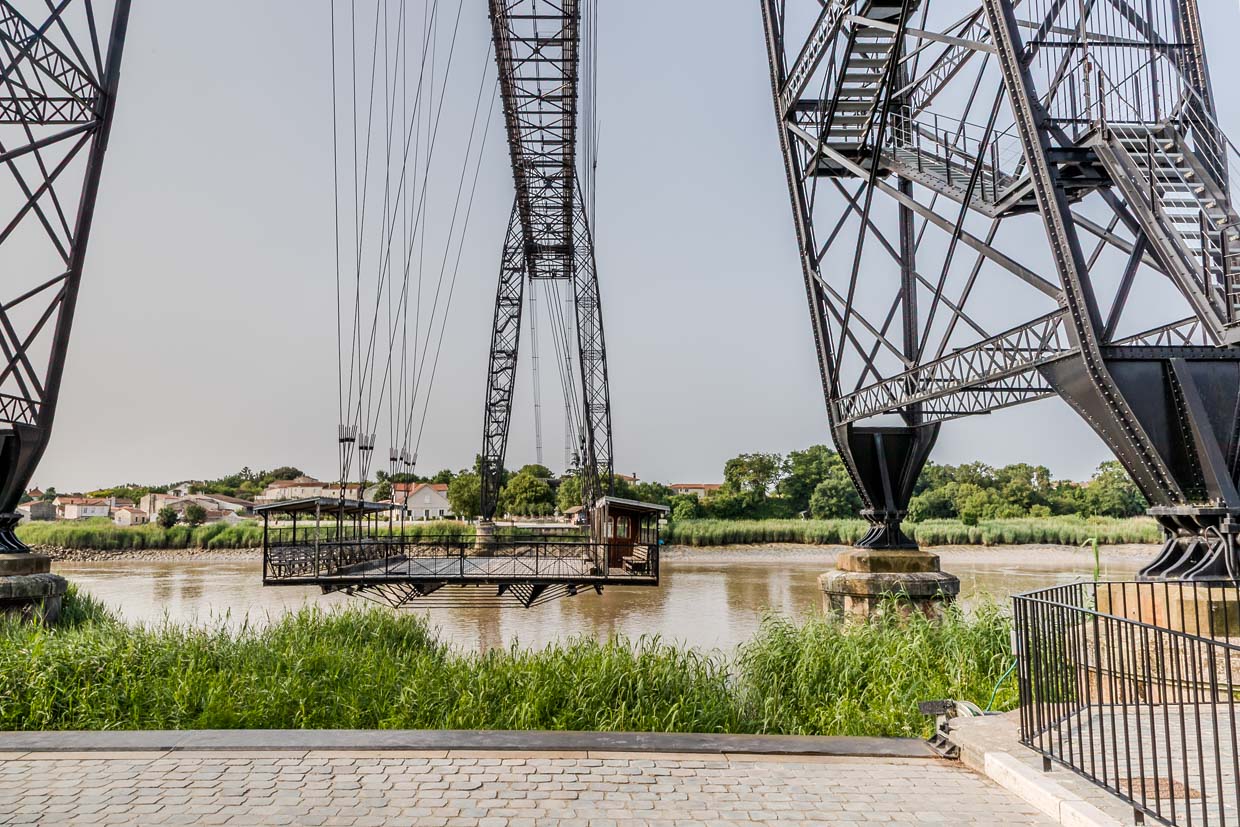
The model Eiffel Tower
From the middle of the 19th century, modern steel buildings from England conquered the world. Probably the most famous steel structure was built in 1889: the Eiffel Tower. At the time, it was the tallest building in the world – a real exclamation mark, erected for the World Exhibition in Paris and the 100th anniversary of the French Revolution.
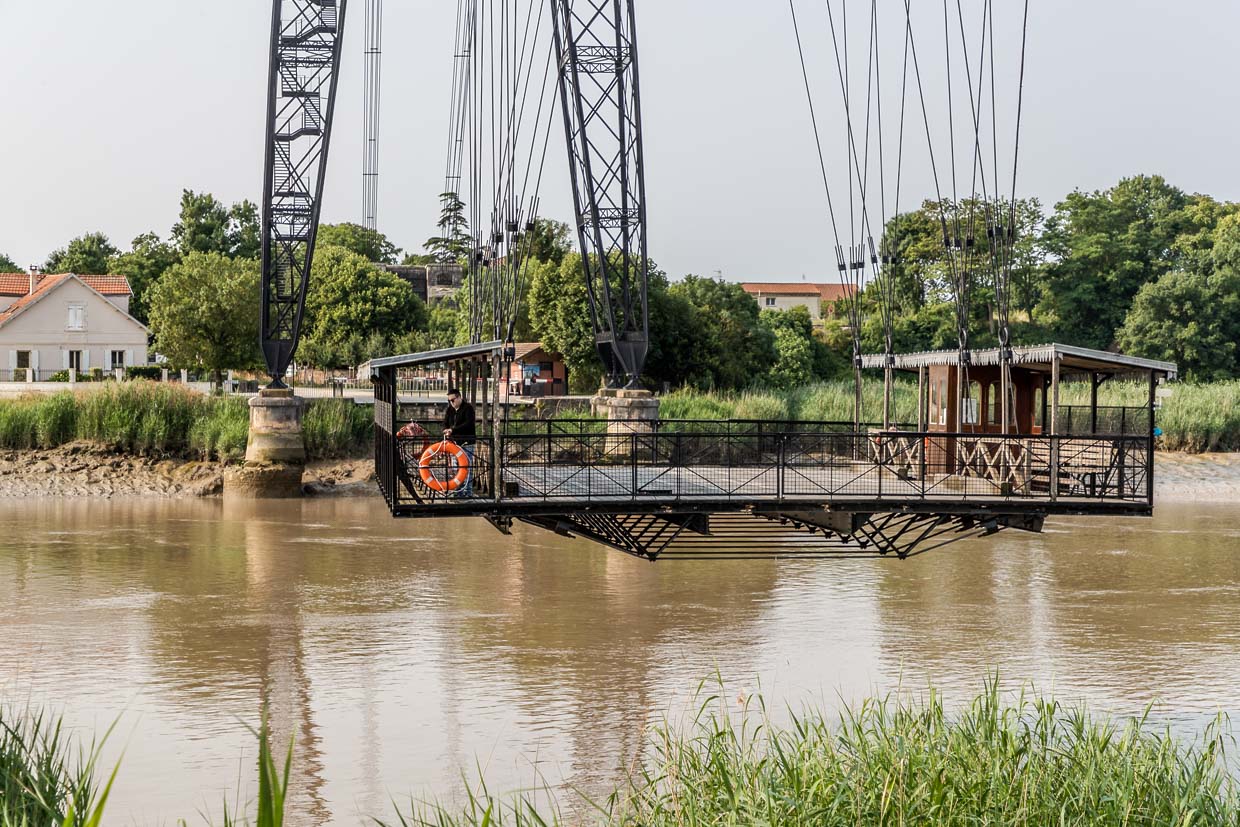
Bridge artists
Gustave Eiffel’s students spread the new steel construction method to many countries. Today, there are only eight suspension ferries like the Pont Transbordeur de Martrou near Rochefort left in the world. The oldest is located in the Spanish Basque Country near Bilbao and has been a UNESCO World Heritage Site since 2006. Where hover ferries have stood the test of time, often saved from demolition in the 1970s thanks to the efforts of citizens’ initiatives, the regions now benefit from the attraction of these steel giants.
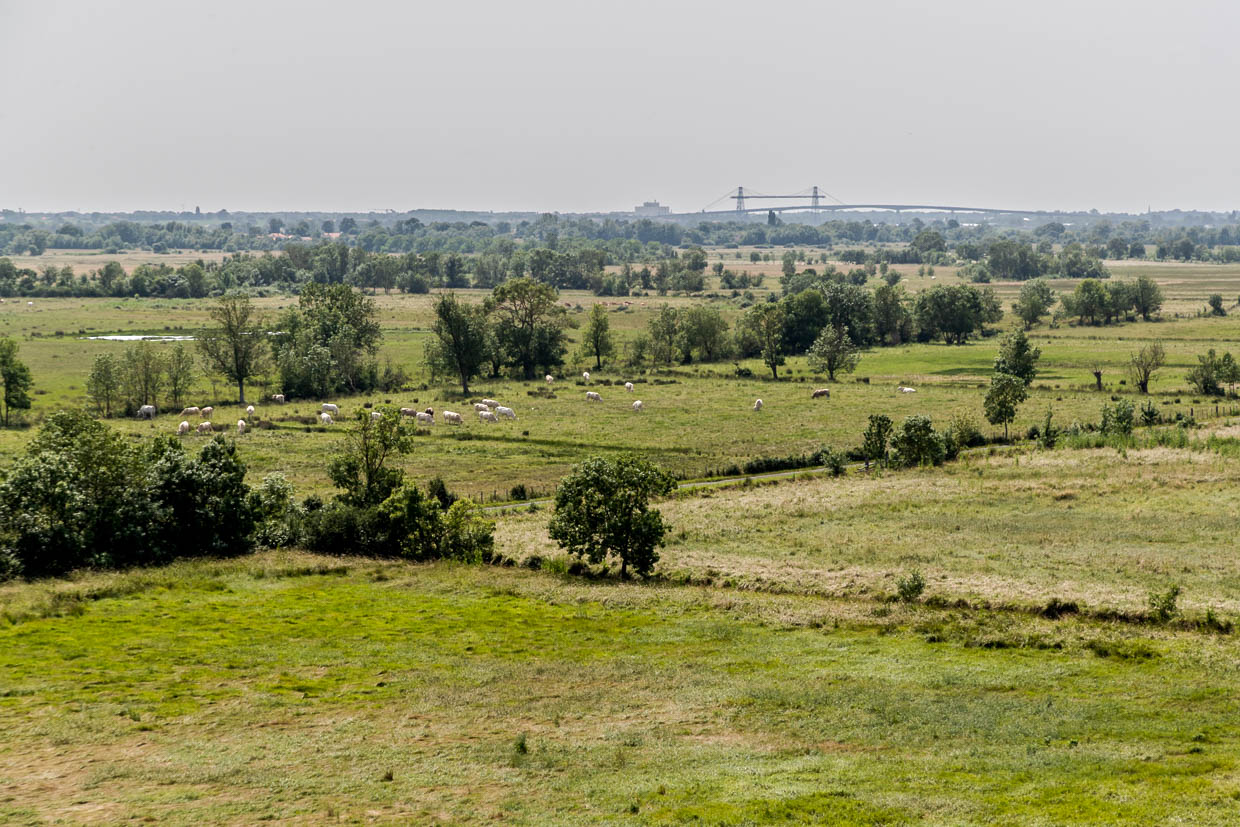
Steel monument and tourist magnet
In addition to the Rochefort ferry and the Puente de Vizcaya from 1893, there are also floating ferries in Great Britain, Argentina and Germany. In Germany, they are located in Cuxhaven and Rendsburg.
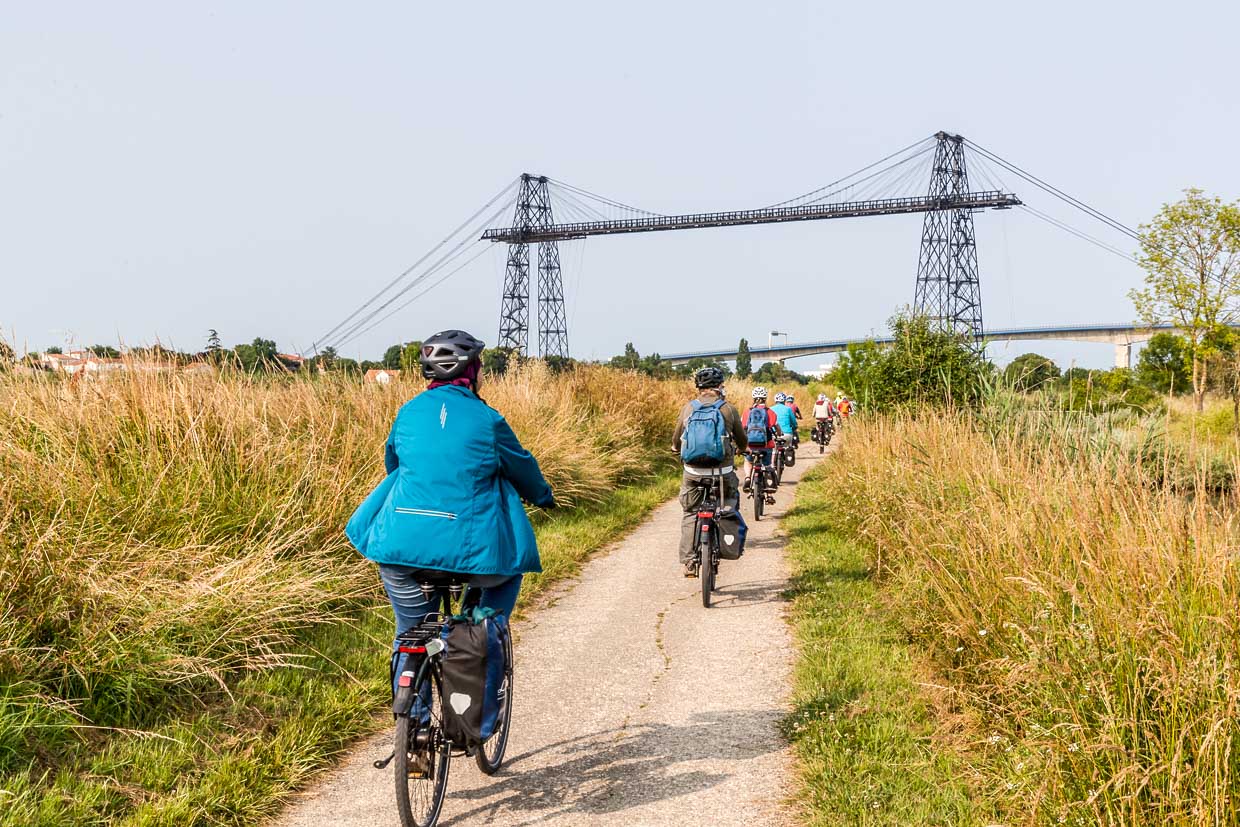
Where these bridges still operate, they attract tourists. Today they no longer transport horse-drawn carts, but cyclists and pedestrians. In Rochefort, there is even a modern information center with a restaurant at the ferry station. The transporter bridge operates from the end of March to the beginning of November.
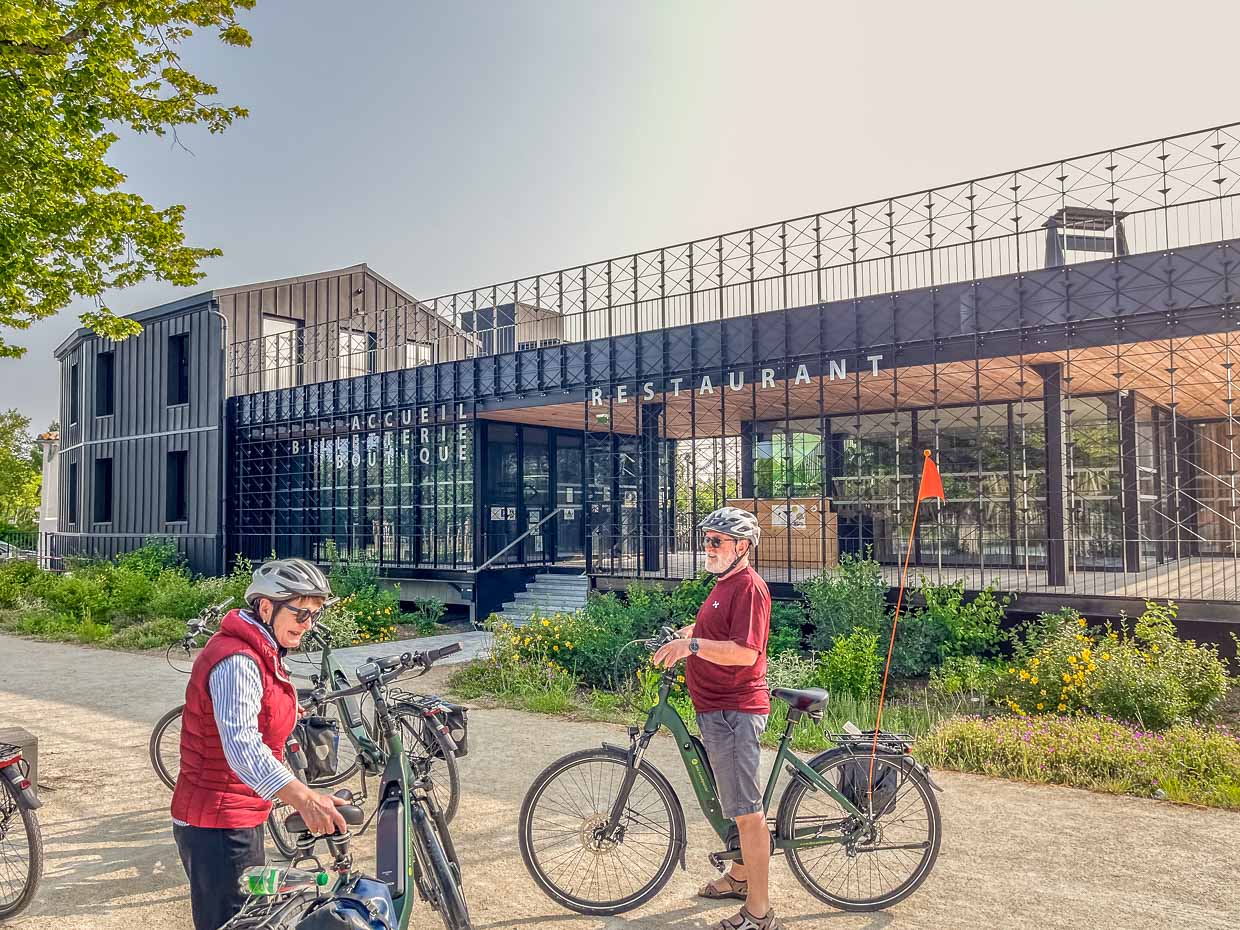
Highlights in Nouvelle-Aquitaine
The Charente winds its way through the French region of Nouvelle-Aquitaine for 380 kilometres. Its course leads from the mountainous headwaters over rolling hills and vineyards to the maritime floodplains at the estuary. From Angoulême, the French capital of comics, the river is navigable all the way to the Atlantic at Rochefort. It was once the main transport route for cognac production. Today, cognac houses and winegrowers invite you to take part in spirit tourism, while cycle paths such as the Flow Vélo take you past picturesque villages, old stone bridges, a rare floating ferry, water mills, castles and the historic centre of Angoulême. The Charente is still an insider tip, as it is one of the most unspoilt river landscapes in France: hardly any mass tourism, but plenty of nature, tranquillity and enjoyment. The small island of Aix was once a bulwark to protect the Charente estuary from enemy fleets and is now a popular destination for a day trip to the sea. There is also plenty to discover in Nouvelle-Aquitaine away from the Charente. For example, some skewered plate art made us think outside the box once again. The city of Poitiers, halfway between Paris and Bordeaux, was the centre of power in the Middle Ages and offers immersive cinema at the Futuroscope leisure park. The city of Limoges is famous for its French porcelain, and a tour of the city provides an insight into the art of porcelain making. There are also great museums dedicated to the history of porcelain art . The journey continues to the Creuse and Berry region. It is the home of the writer George Sand and the cradle of tapestry in France. In A Carpet for George Sand, the two themes are linked. The Cité internationale de la Tapisserie in Aubusson shows that carpets are not the dusty art of bygone days.
The research trip was supported by Nouvelle-Aquitaine Tourism and Die Landpartie


